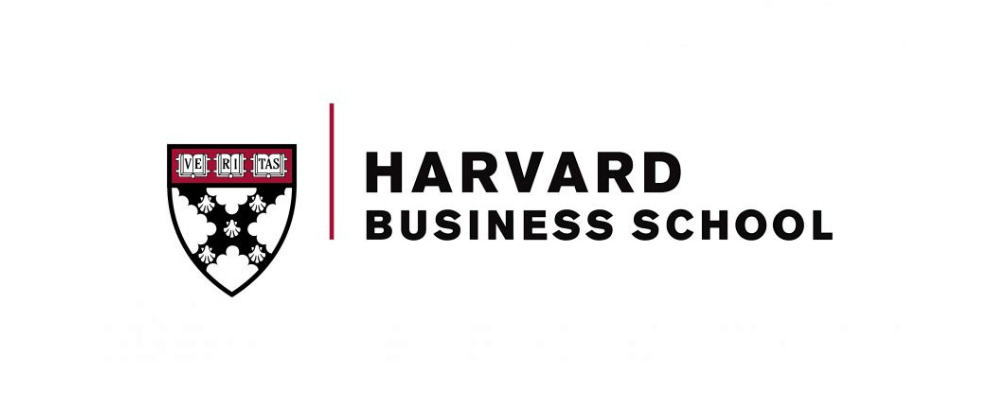Businesses that dismiss TikTok as merely a platform for teenagers looking to create and consume cat and dance videos do so at their own peril.
That’s the message of a Harvard Business School case study tracing the video-sharing app’s explosive rise to the world’s most-used platform. Owned by Beijing-based ByteDance, TikTok blew past Google in 2021 to become the world’s most visited domain. In the United States alone, TikTok boasts more than 150 million users—almost half the country’s population.
“It is where the future is,” says Shikhar Ghosh, MBA Class of 1961 Professor of Management Practice at HBS who authored the case study with HBS researcher Shweta Bagai. Businesses need to “understand how it is that they’re doing what they’re doing so that they can incorporate the power of algorithmic technologies into their companies,” Ghosh says.
“It’s creating algorithms that can actually see you. It doesn’t rely on what you say. It observes what you do and choose not to do and builds a model of who you are.”
Ghosh’s analysis debuts at a time when TikTok is drawing fresh scrutiny related to how its Chinese owners influence global markets and minds. In March, the House of Representatives passed a bill requiring that TikTok sell itself to a US buyer or be banned; the Senate voted in favor of the legislation and US President Biden swiftly signed it into law in April. What happens next is being closely watched by users, companies, and legal experts.
The case details the power China’s government exerts on TikTok, concerns the app could compromise US national security and user data, and stark differences between the content and rules mandated in China versus abroad.
“You must ask yourself, ‘What is the power of this thing?’” Ghosh says. “It’s creating algorithms that can actually see you. It doesn’t rely on what you say. It observes what you do and choose not to do and builds a model of who you are. And as a consumer or a partner [what] you want most is to be seen.”
He says that business leaders need to understand these five points about TikTok, in particular:
1. TikTok understands users’ emotions
TikTok presents videos it thinks a user might engage with, rather than waiting for the user to choose posts they prefer or follow those of influencers or friends. Its single-page vertical videos allow the app to see what the user is looking at and for how long, which helps the algorithm triangulate what users care about. It chooses for you. It is constantly making and validating hypotheses about you. It is learning.
“What they’ve been able to do is somehow break through this notion of ‘How do I know somebody? How do I know what moves them? How do I know what engages them?” Ghosh says. “That’s been the holy grail of advertising—understanding emotion and building trust—for a long, long time. They’ve been able to do it algorithmically and therefore do it at scale. So, you don’t have to say, ‘I am going to craft something for you.’ The algorithm can do that.”
The recommendation engine steers up to 95 percent of TikTok’s content to the user. It also presents choices the user may not have sought out in the first place to lengthen the time someone might be on the platform and the breadth of what they choose to engage with.
2. TikTok is smart—and getting smarter
Once TikTok knows what users care about, it serves them more content they may enjoy. Users feed the app data all the time because TikTok makes it fun to create and consume. And the algorithm can then serve a wider variety of content to see what may resonate, refining its understanding of the user.
“It knows that even if you like this thing—fast cars, for example—that you might also like many other things that may or may not be like it.”
For example, a user might linger over a Ferrari video. “But, it could be that you really like the color red, and it could be that what you really love about the car is the design and the lines of it,” Ghosh says. “As opposed to ‘I’m a car buff who likes to look at racing.’ And you might like the Ferrari, but you also might like it because you have a sensibility for Italy, or brands that are markers of status. You could also be drawn in by the soundtrack or the voice of the presenter.”
One way to think about it, Ghosh says, is that TikTok “views you as this complex being. Even when something has worked with you, it will favor that, but it will not exclusively give you that. Because it knows that even if you like this thing—fast cars, for example—that you might also like many other things that may or may not be like it.” Unlike other systems that use a social graph—who you follow—as a proxy for an interest graph—what you like, TikTok’s system goes directly to an interest graph. The content finds you.
3. TikTok makes it simple to create content users trust
Even first-time users can easily create short videos that achieve wide visibility. Each video is guaranteed a small viewership of up to 500 people to assess its appeal through metrics like watch time; depending on its performance, a video could go out more broadly.
“They have a very powerful system to get each of their users to contribute to the content,” Ghosh notes.
Unlike other social platforms that force people to build a following in order for content to be seen, the tool enables users of all abilities to build on content created by other users. Users can build new content by recombining elements of existing content. The system enables an explosion of new content without requiring content creators to have exceptional talent or commit significant time.
TikTok has been able to forge a deep connection with users. Some 58 percent of TikTok users say they’re more likely to trust brands after learning about them from TikTok creators versus advertising from companies. But even ads created specifically for TikTok had a 27 percent higher “completion rate”—when viewers watch the whole ad— than ads that were repurposed from other platforms, the case notes.
4. TikTok powers other business opportunities
The average US TikTok user spent 45.4 hours a month on TikTok in 2023, passing YouTube’s 26.2 hours, according to Statista. It’s a place to get seen.
Last year, TikTok focused on advertising as its main revenue source and is now expected to reach $14 billion in 2026, up from $4 billion in 2021, according to the case. At the time of the case study in December 2023, TikTok commanded $2.6 million for an ad to run for one day at the top of its TopView feature, which displays when people open the app. To compare, a 30-second television ad for the Super Bowl costs $6.5 million.
TikTok is developing an in-app marketplace in some countries that takes consumers “seamlessly from videos and live streams to shopping,” the case notes. Most of the TikTok Shop’s e-commerce sales are, for the moment, in Southeast Asia, with the US version of the feature is still losing money.
5. A US ban could undermine American companies
A ban, Ghosh says, would ultimately put the US behind when it comes to developing comparable technology, and finding the right regulatory frameworks for using the power of these technologies to strengthen rather than weaken our society and values. The urge to ban the technology comes from a misunderstanding of why TikTok is effective and how the technology that underlies its power is likely to be deployed, Ghosh suggests.
“Banning something is such a blunt instrument,” Ghosh says. “This is really knowledge that you are now going to not allow US companies to learn from. It would be like China banning the best chips just because they’re made in the US. For a short time, you get some benefit. But over time, you also haven’t learned how to compete or regulate the technology.”
“In this case, there’s nothing that complicated about the technology that they have. We have to learn how to build a system that takes the benefits from that technology.”
The Chinese version of TikTok, Douyin, uses the same framework for social engagement but has been deployed in a way that strengthens the values and objectives of the Chinese government, the case notes. There are limits on when kids can use the application. The content is required to promote objectives of the government. There are significant penalties for not following regulations. As a result, the system becomes a powerful tool to reinforce their values.
Ghosh notes, “In this case, there’s nothing that complicated about the technology that they have. We have to learn how to build a system that takes the benefits from that technology. We also have to learn how to incorporate that technology into society, without destroying society.
“Saying ‘You can’t do it’ doesn’t mean it’s not going to exist. It means that slowly, the Metas and the Googles of the world are learning how to manipulate us just the way that TikTok can. In fact, they are working really hard at it.”
You Might Also Like:
Feedback or ideas to share? Email the Working Knowledge team at hbswk@hbs.edu.
Image: Illustration created by HBSWK using image from AdobeStock/Andrii Zastrozhnov
“Harvard Business School is the graduate business school of Harvard University, a private research university in Boston, Massachusetts. It is consistently ranked among the top business schools in the world and offers a large full-time MBA program, management-related doctoral programs, and executive education programs.”
Please visit the firm link to site



